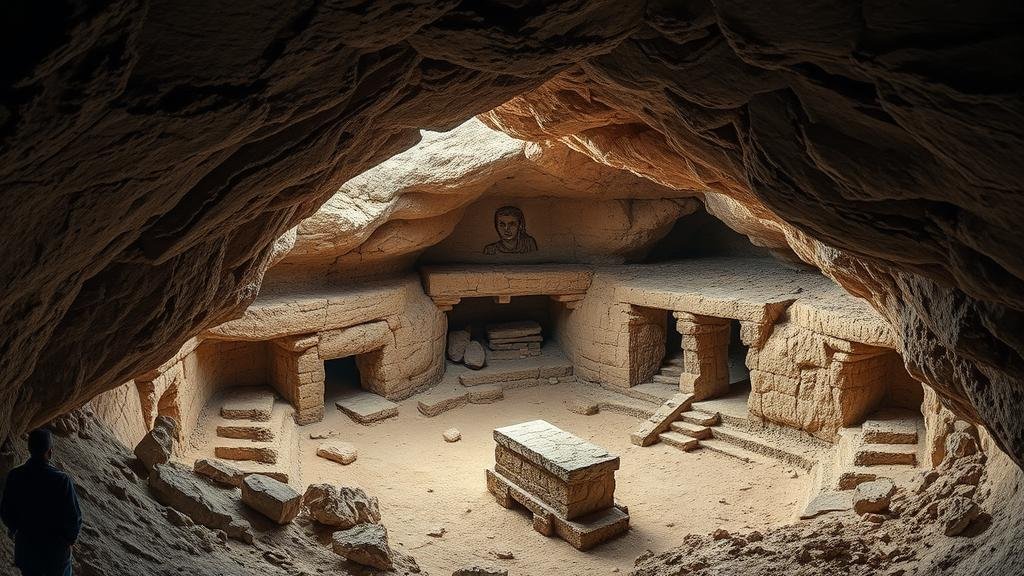Discovering ancient burial chambers hidden within Himalayan caves.
Discovering Ancient Burial Chambers Hidden Within Himalayan Caves
The Himalayas, often referred to as the roof of the world, are not only famous for their breathtaking peaks but also for their rich historical treasures. Among these are ancient burial chambers that lie hidden within the vast networks of caves that populate the region. Recent archaeological studies and discoveries have shed light on these fascinating sites, revealing insights into ancient cultures and burial practices.
The Significance of the Himalayas in Archaeology
The Himalayan range, stretching across five countries–India, Nepal, Bhutan, China, and Pakistan–has been the subject of archaeological interest for decades. This is primarily due to its diverse cultures, which have inhabited these high altitudes for thousands of years. As a result, the caves within this range serve as critical archaeological sites, preserving the artifacts, remains, and architectural styles characteristic of various eras.
Notable Discoveries
Over the years, several significant discoveries have been made in the Himalayan caves. For example, in 2005, a team of archaeologists uncovered a burial site in the Spiti Valley of northern India. Radiocarbon dating of the remains suggested that the site dates back over 1,500 years, shedding light on the burial customs of ancient Buddhist communities.
- The Spiti Valley burial site yielded artifacts such as pottery, textiles, and metal tools.
- Similar findings in the Mustang region of Nepal included remains buried alongside offerings of food, indicating rich ritualistic practices.
The Use of Caves for Burial Practices
Caves have long served as natural burial grounds due to their properties. They offer protection from weather elements and safeguard the deceased from scavengers. In various cultures, the choice of cave as a burial site also holds spiritual significance. For example, in Buddhist traditions, it is believed that caves serve as transitional spaces between the physical world and the afterlife.
Technological Advances in Exploration
Modern technology has revolutionized the exploration of caves in the Himalayas. Techniques like Ground Penetrating Radar (GPR) and LiDAR (Light Detection and Ranging) have made it possible to survey these caves without disturbing the ancient artifacts contained within them. In recent years, researchers have utilized these technologies to locate potential burial sites, leading to discoveries that would have been impossible with traditional excavation methods.
Challenges and Concerns
While the exploration of ancient burial chambers offers immense potential for understanding human history, it is not without challenges. Environmental factors such as harsh weather conditions can pose significant obstacles. Plus, the preservation of these sites is a growing concern; many caves are threatened by tourism, illegal excavations, and climate change. Researchers emphasize the need for sustainable tourism practices and legal protections to safeguard these historical treasures.
Real-World Applications
Understanding ancient burial practices can provide insights into the sociocultural dynamics of past civilizations. For example, by studying the artifacts found within these burial chambers, historians can draw parallels to modern social structure and religious practices. Also, these discoveries can be used as educational tools to foster a deeper appreciation of cultural heritage among younger generations.
Conclusion
The discovery of ancient burial chambers in the Himalayan caves not only enriches our understanding of history but also raises vital questions about cultural preservation. As further exploration continues, it is crucial to balance the quest for knowledge with the responsibility to protect these invaluable sites. Embracing technology and sustainable practices will be vital in ensuring that these ancient echo chambers of human history continue to convey their stories for generations to come.
Actionable Takeaways
- Support initiatives aimed at the preservation of Himalayan archaeological sites.
- Engage with educational programs to help raise awareness about cultural heritage.
- Practice sustainable tourism if exploring these archaeological sites to minimize impact.



